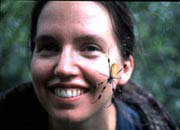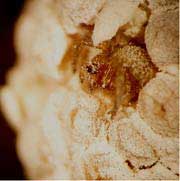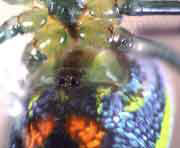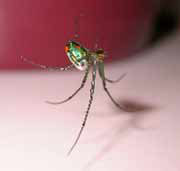Research Areas:
Evolution of behavior; sexual selection; quantitative genetics of mating behavior; conservation biology and speciation of arthropods; electronic vision
My research bridges evolutionary biology and animal behavior to explore how variation in mating behavior evolves and is maintained in natural populations.
(1) Evolution of mating behavior in orb-weaving spiders.
Sperm competition is widespread in animal taxa, but spiders are one of the few taxa where first-male priority for paternity is common. I examine mechanisms of paternity patterns in spiders and how different mechanisms of sperm competition can influence the outcome of paternity. My research has shown that this priority pattern can be reversed, and that differential sperm release is more important than female reproductive morphology in predicting paternity and should be examined in future studies of sperm competition.
(2) Systematics and natural history of orb-weaving spiders
I use a combination of morphological and molecular techniques to address the systematics of orb-weaving spiders. Finding new phylogenetically informative characters is important for taxonomy. My research revealed astonishing new variation in the ultra-structure of spermathecae and cuticular ducts in spiders. These traits are a rich source of new phylogenetic characters.
(3) How is genetic variation maintained for mating behavior in natural populations?
The maintenance of genetic variation in male courtship traits undergoing directional selection from female choice, has long puzzled evolutionary and behavioral biologists alike. My empirical research on the lesser waxmoth Achroia grisella has shown that genotype x environment interactions and indirect genetic effects can maintain genetic variation in male courtship behavior. My research used a combination of quantitative genetics of inbred lines and the development of molecular markers (AFLPs) to examine the genetics of behavior in this species.
(4) How do environmental stressors affect reproduction in natural populations?
While conducting fieldwork in Texas and Louisiana, I have discovered that spiders may be exceptionally sensitive to environmental toxin exposure. This finding has serious implications for species conservation and the early detection of environmental pollutants in natural systems.
(5) Using electronic vision to deconstruct video for data analysis
I am part of a multi-disciplinary team that is using new digital technology to analyze digital video recordings of behavior. See my Lab Software page for more information.





